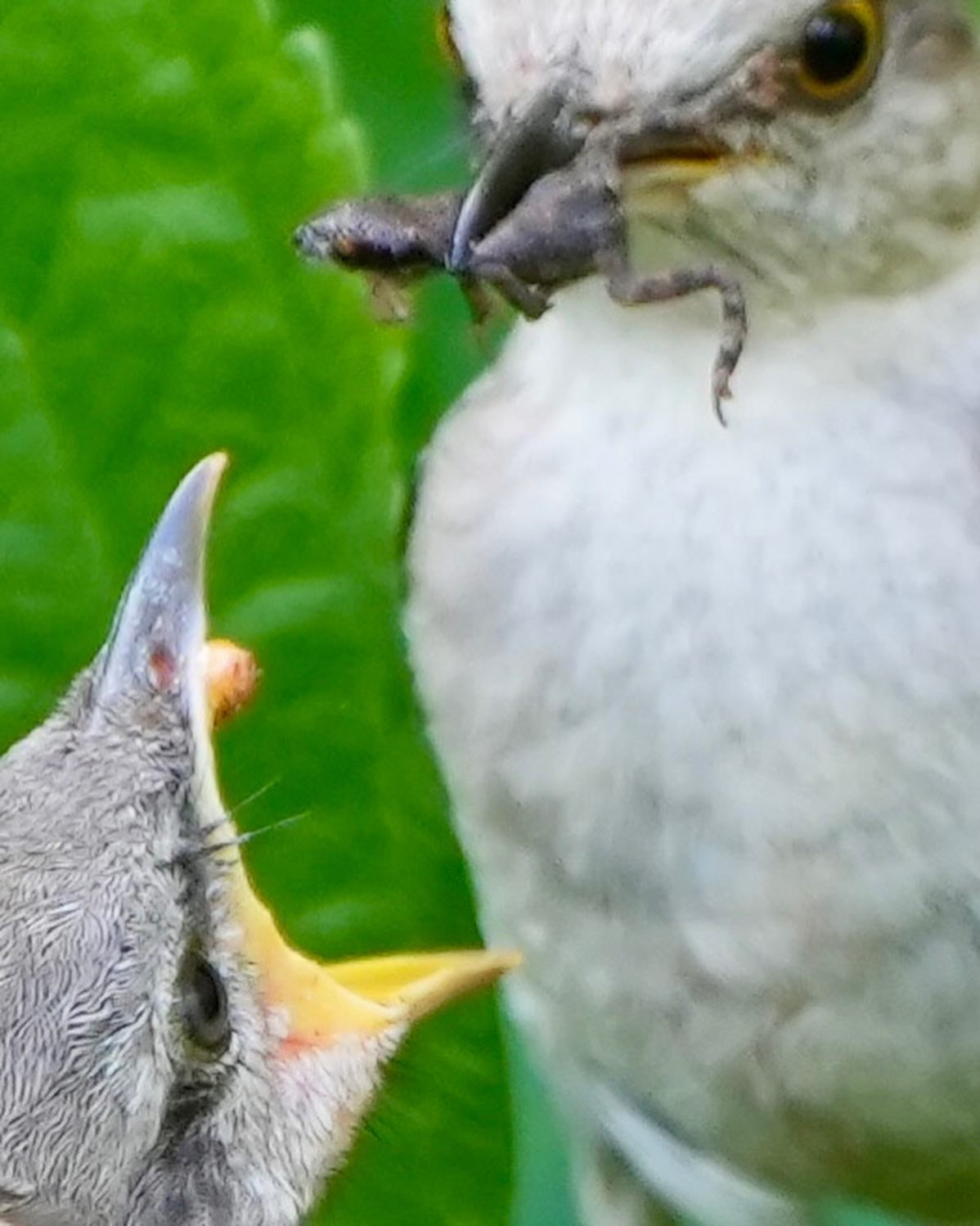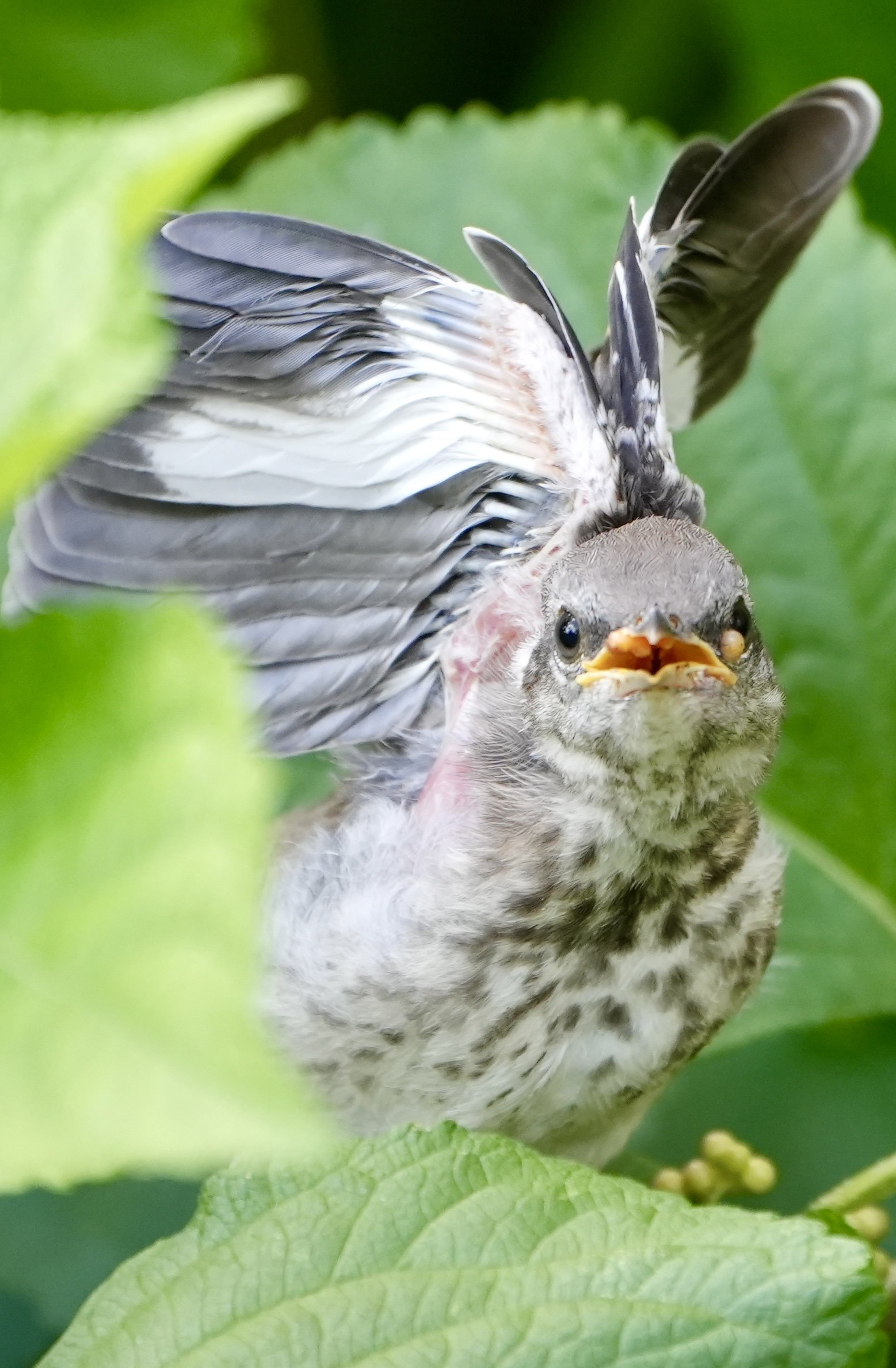On an early July morning, with a new camera in my hands, I was hopeful the zoom lens would document unseen details in Symbiosis. I focused the lens on the “feed me” gesture of the juvenile bird. Later zooming in on the image on my computer revealed the middle of the food chain — A Mockingbird feeding a juvenile, not a caterpillar, wasp, or an insect but a slight blurry silhouette of a toad. On my laptop, I witnessed the middle of the food chain, a moment in a living sculpture, evidence of a healthy ecosystem and hope in a sea of asphalt on the Gulf Coast.
In Symbiosis building, a food chain that has not been exposed to chemicals or pesticides is crucial to building a base and armature that supports the more visible kinetic elements — wildlife and humans, the upper food chain. Its strength is critical to the success of the whole.
I use systems thinking to plan and organize my sculptural additions and extractions to the piece. In this case, not using pesticides to control insect pests or unruly vegetation is a priority. The water feature in the garden invites mosquitos, dragonflies, frogs, toads, and aquatic insects to lay their eggs in the still water. The tadpoles, nymphs, and Texas mosquito fish eat the mosquito larvae.
In the work, all of the individual species are linked by the health and abundance of the lower species. “Symbiosis” is an element of the “living” Earth, a community of organisms existing within the Art center's sculpture garden and social sculpture.






